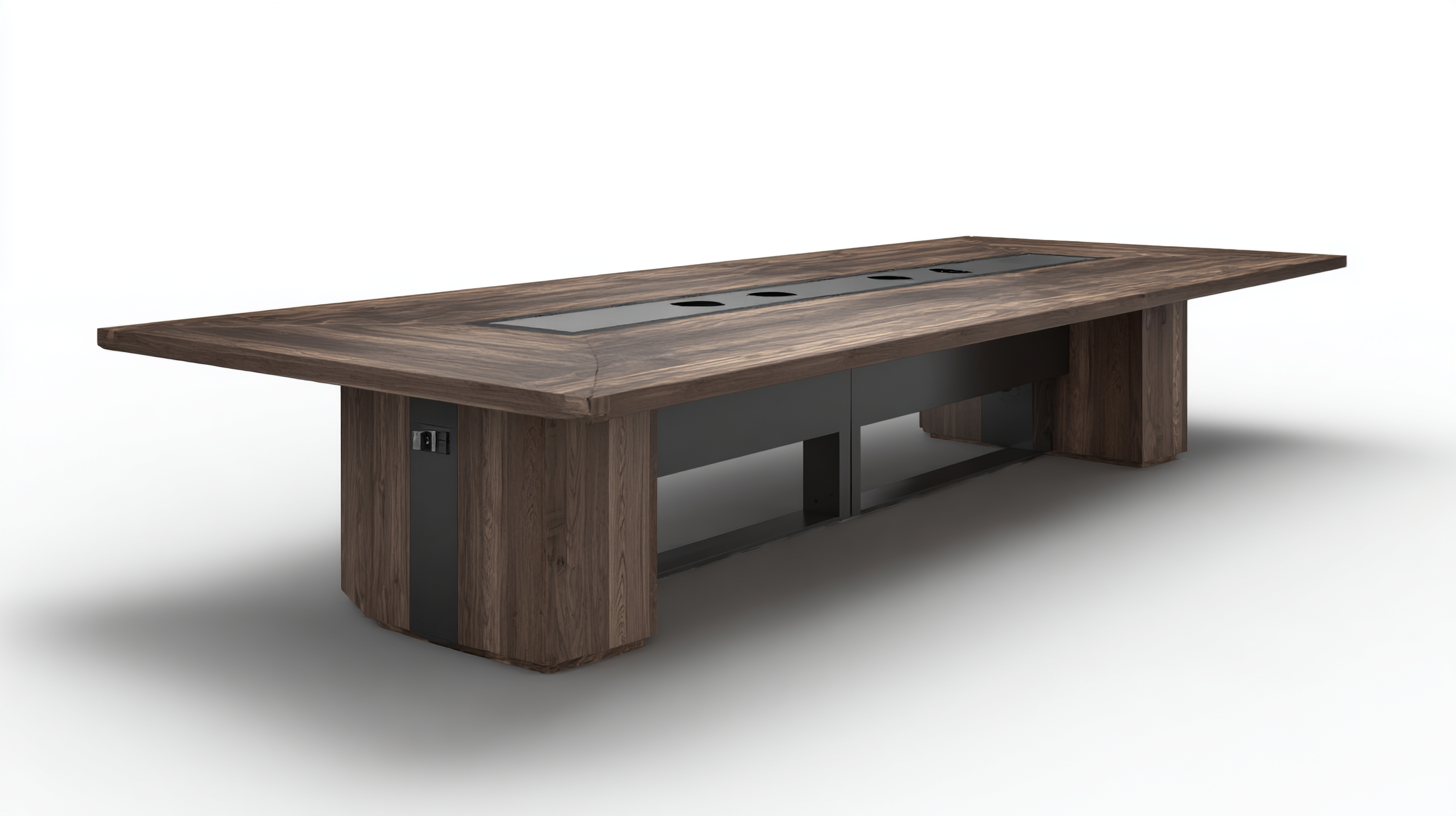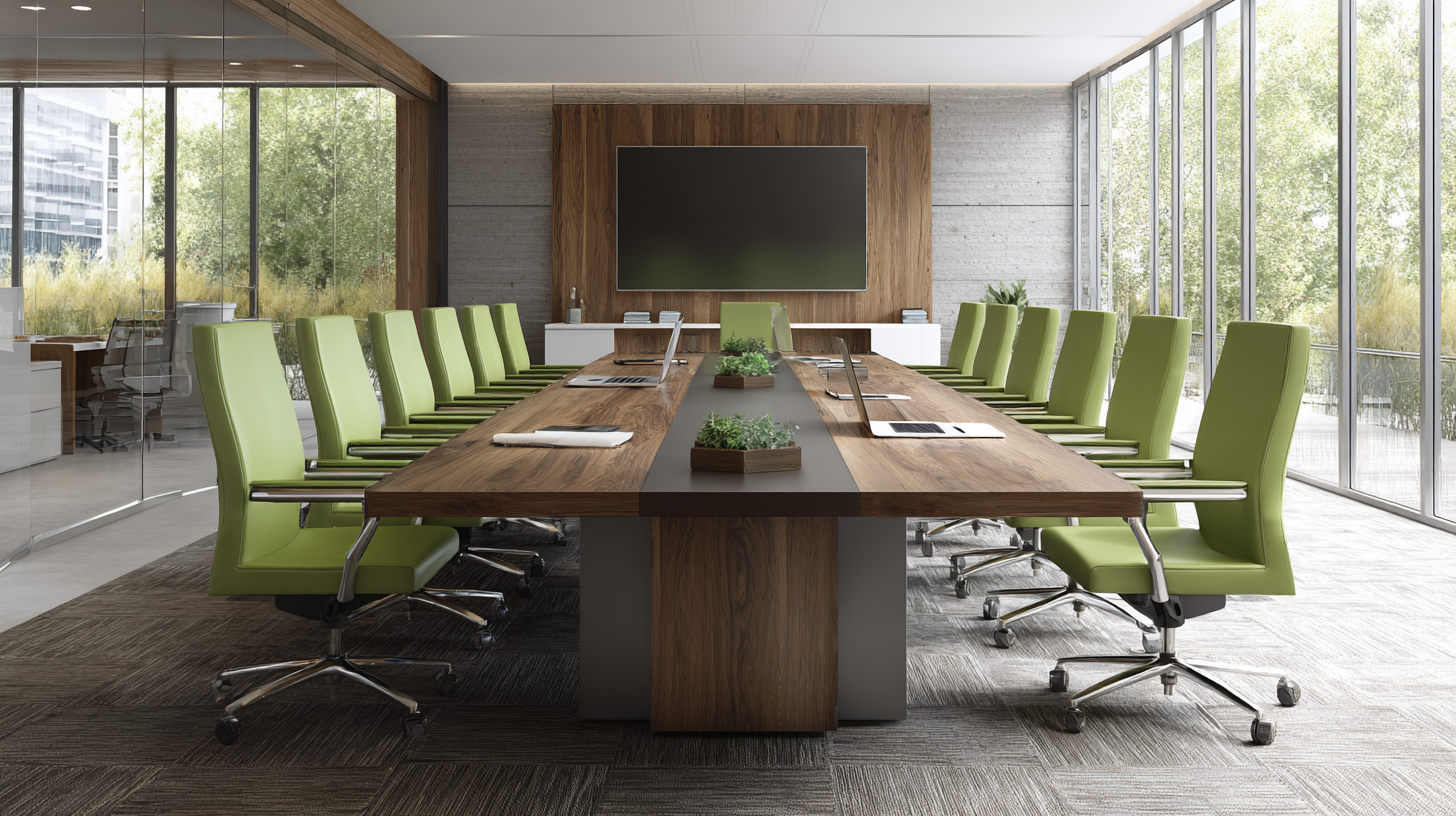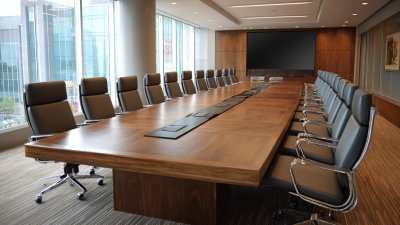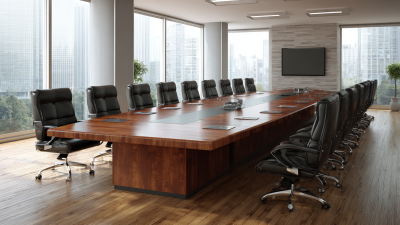Maximizing Workspace Efficiency with Versatile Meeting Tables for Dynamic Collaboration
In today's fast-paced business environment, the effectiveness of team collaboration hinges significantly on the design and functionality of the workspace. Among the various elements that contribute to a productive office, the meeting table stands out as a pivotal piece of furniture that can either facilitate dynamic collaboration or hinder it.
 A versatile meeting table not only provides a physical space for discussions but also enhances the flow of ideas and creativity among team members. With the right design, features, and technology integration, meeting tables can be transformed into collaborative hubs that adapt to different needs and styles of interaction. This article aims to explore innovative tips and strategies for maximizing workspace efficiency through the thoughtful selection and arrangement of meeting tables, ultimately fostering a more engaged and dynamic working environment.
A versatile meeting table not only provides a physical space for discussions but also enhances the flow of ideas and creativity among team members. With the right design, features, and technology integration, meeting tables can be transformed into collaborative hubs that adapt to different needs and styles of interaction. This article aims to explore innovative tips and strategies for maximizing workspace efficiency through the thoughtful selection and arrangement of meeting tables, ultimately fostering a more engaged and dynamic working environment.
Optimizing Space Utilization: The Impact of Versatile Meeting Tables on Office Layout

The modern workplace is evolving, and the way we utilize space can significantly impact collaboration and productivity. Versatile meeting tables are designed to adapt to various activities, from formal presentations to casual brainstorming sessions. Their flexibility allows teams to quickly reorganize the workspace, fostering a more dynamic and interactive environment. This adaptability not only enhances collaboration but also encourages creativity among team members, making it essential for offices aiming to thrive in today’s fast-paced business landscape.
Furthermore, optimizing office layout with these multifunctional tables can lead to better space utilization. Traditional static office setups often limit engagement and hinder teamwork. In contrast, versatile meeting tables create fluid spaces that can be easily configured based on the task at hand. This approach not only maximizes the available area but also promotes a culture of cooperation and innovation. As organizations recognize the value of agile workspaces, integrating adaptable furniture solutions becomes a strategic move toward fostering a collaborative work environment that meets the demands of the modern workforce.
Enhancing Collaboration: Best Practices for Dynamic Team Meetings with Flexible Tables
In today's fast-paced work environment, flexible meeting tables play a pivotal role in enhancing team collaboration. These versatile spaces foster an atmosphere of dynamic interaction, allowing teams to adapt quickly to varying needs during brainstorming sessions or strategic discussions. To optimize the benefits of these flexible meeting setups, consider implementing best practices that prioritize engagement and inclusivity.
**Tips:** Encourage participation by arranging seating that facilitates eye contact and conversation, creating a welcoming layout for all team members. Also, leverage technology to support hybrid meetings, ensuring remote participants feel as included as those in the room.
Moreover, the design of a workspace should promote movement and creativity. Incorporating elements that inspire employees can lead to more productive meetings. Choose tables that are easily movable to transform the space to suit various formats, from large group discussions to intimate brainstorming sessions.
**Tips:** Regularly solicit feedback from your team on the meeting space and adapt it based on their preferences. Consider integrating tools that complement tabletop functions, like whiteboards or digital screens, to enhance productivity and engagement during discussions.

Employee Productivity Boost: Statistics on Workspace Arrangement and Meeting Table Design
In today's fast-paced work environment, the arrangement of workspace and the design of meeting tables can significantly influence employee productivity. Research indicates that a well-organized workspace minimizes distractions and enhances focus, which in turn boosts overall output. Statistics show that teams working in flexible, adaptable meeting spaces demonstrate a 25% increase in collaboration and creativity. This flexibility allows employees to engage in dynamic discussions, leading to innovative solutions that might not surface in traditional meeting setups.
Moreover, the design of meeting tables plays a crucial role in fostering collaboration. Tables that encourage interaction—such as round or modular designs—can lead to a 30% improvement in team engagement during meetings. The choice of table can also affect communication; for example, circular tables promote equal participation among team members, reducing hierarchical barriers. By prioritizing versatile meeting table designs, organizations not only create a more inviting atmosphere but also pave the way for greater employee involvement, resulting in a direct boost to productivity across the board.
Cost-Effectiveness of Multifunctional Meeting Tables in Modern Work Environments
In today's fast-paced work environments, the demand for multifunctional meeting tables is on the rise due to their cost-effectiveness and adaptability. According to a report by the International Facility Management Association (IFMA), efficient use of space can significantly reduce overall operational costs by up to 30%. By integrating versatile meeting tables, organizations not only optimize their workspace but also enhance collaborative efforts among teams. These tables can be easily reconfigured for various purposes, supporting everything from brainstorming sessions to formal presentations, which boosts productivity and promotes a dynamic workplace culture.
Moreover, a recent study from JLL highlights that workplaces that invest in adaptable furniture see a 20% increase in employee satisfaction. This is important because satisfied employees are more likely to be engaged and contribute to collaborative efforts. Multifunctional meeting tables, often designed with technology integration in mind, enable seamless communication and foster innovation. The cost-effectiveness of these tables is further emphasized through their longevity and reduced need for additional furniture, leading to significant savings in the long term. As businesses strive to create spaces that support flexible work styles, the undeniable value of versatile meeting tables becomes increasingly clear.
Maximizing Workspace Efficiency with Versatile Meeting Tables
Future Trends: The Evolution of Collaborative Spaces with Smart Meeting Table Solutions
The evolution of collaborative spaces is increasingly shaped by innovations in smart meeting table solutions. As organizations adapt to hybrid work models, these versatile tables have emerged as integral tools that enhance communication and teamwork. The fusion of technology and design in meeting tables allows for seamless connectivity and interaction, facilitating dynamic collaboration among teams, regardless of their physical location.
Recent discussions around the future of digital offices highlight the significance of efficient equipment in creating optimal workspace experiences. As highlighted in recent forums, the advancement in smart meeting tables contributes to an immersive environment, where user-friendly features and advanced connectivity options not only streamline workflows but also elevate the overall client experience. This shift towards intelligent solutions signifies a broader trend in workplace transformation, catering to the demands of modern collaboration while enhancing productivity and engagement.
Related Posts
-

5 Reasons Why Meeting Tables Boost Productivity in Today’s Workspaces
-

How to Choose the Perfect Meeting Table for Your Business Needs
-

Innovative Ways to Utilize the Best Conference Room Table in Collaborative Workspaces
-

Unlocking Global Trade with Best Conference Room Tables Through Industry Certification Standards
-

How to Choose the Perfect Office Chair for Your Work Environment
-

Craftsmanship Meets Global Demand in Executive Office Furniture Made in China
